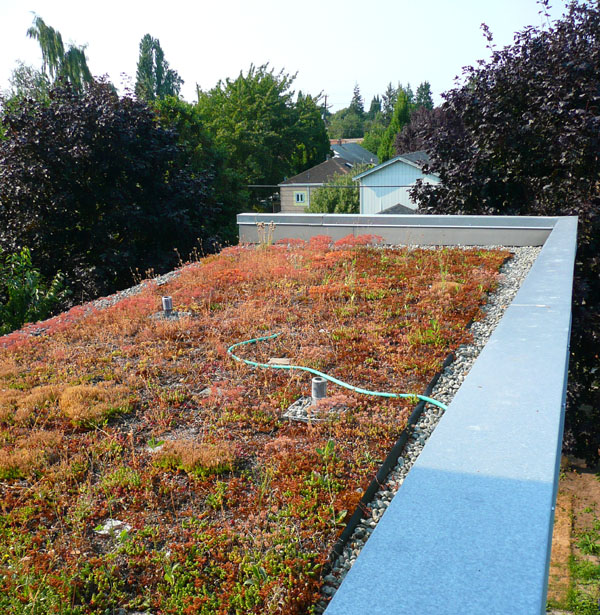Green Roofs and Puget Sound

[ Garage green roof in Mount Baker designed by Harrison Architects. ]
Earlier this month the Puget Sound Partnership released a draft Action Agenda, “a roadmap for protecting, restoring and cleaning up Puget Sound.” In this astute PI opinion piece, Roger Valdez connects the dots to compact development, and calls for policy changes that would allow for increased density in Seattle’s extensive single-family zones.
A far less controversial strategy for reducing polluted stormwater runoff — identified as the biggest threat to Puget Sound — is the implementation of green roofs. The retention of rainwater on green roofs can reduce their runoff by up to 75 percent. And while rooftops are not nearly as big a source of pollutants as are roadways, reducing runoff from roofs matters because all the stormwater ends up in the same pipe. Less runoff means less load on costly detention and treatment systems, and decreased likelihood that heavy rains will cause overflow events, during which untreated sewerage pours directly into the Sound.
In addition to abating runoff, green roofs help mitigate the urban heat island effect, and provide roof insulation, both of which reduce energy use and associated greenhouse gas emissions. They can also provide wildlife habitat. And they sure do look a heckuva lot nicer than a blank roof.
The only remaining question is: why are they still so uncommon in the Puget Sound region? Sure, we’ve got a handful or two, mostly on municipal buildings, but nothing compared to what’s being done in Europe. And of course the reason for this disparity comes down to ideology: European societies are much more inclined to wield government power in the cause of the common good. In other words, they regulate and significantly subsidize green roofs. (This is also why Germany is the world’s biggest consumer of photovoltaics.)
Green building rating systems such as LEED, and the City of Seattle’s new Green Factor code were crafted to encourage green roofs. But since the upfront costs are so significant — roughly two times a conventional roof — most private developers have remained unenthusiastic. The problem is simple: the free market gets a bit wobbly when it comes to both the future and the common good. The solution is also simple: government incentives.
While the ubiquitous flat roofs of highly urbanized areas are the most facile targets for green roofs, there is also great potential in the vast square footage of impervious rooftop in Seattle’s single-family zones, as in the two accompanying photos. But so far, such projects are extremely rare. If any readers know of other small-scale green roof projects, consider it a good excuse to leave a comment.

[ Single-family green roof in South Park designed by Silo Architecture. ]
